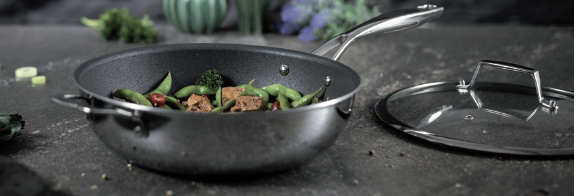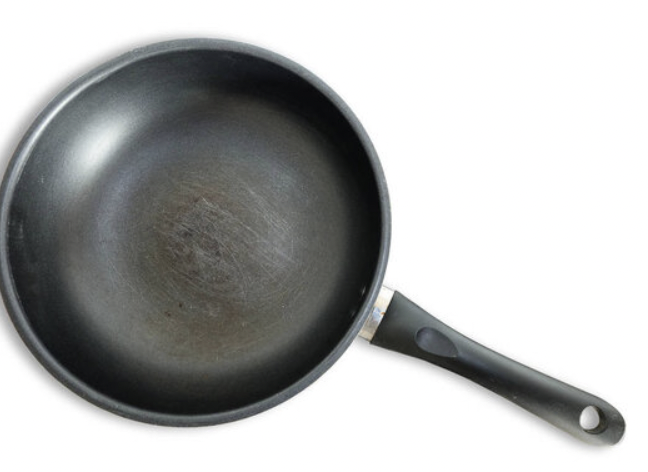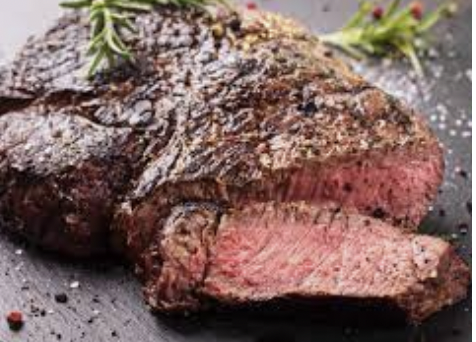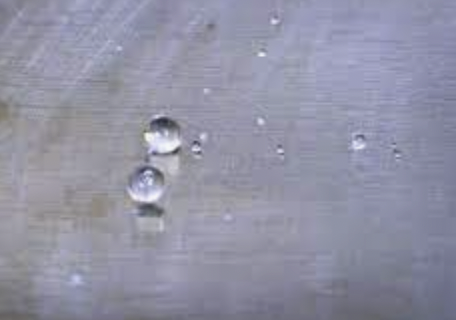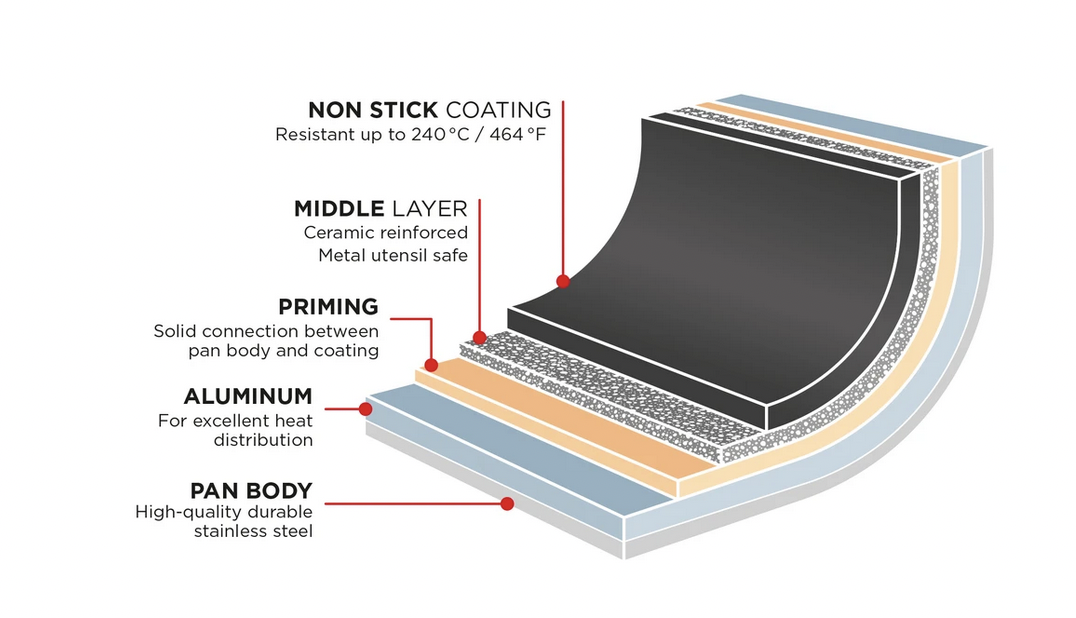Stainless-Steel or Nonstick – One Pan Offers Both – Kuhn Rikon
By Chef David
Selecting the right pans can be confusing. Some amateur chefs are attracted by brand names, many of which are made of stainless steel or aluminum, while others favor lower-cost pans which tend to be nonstick. Both have strengths and weaknesses. Understanding their differences allows you to make an informed decision, taking into consideration performance, lifetime, ease of use, and emerging new brands. The Kuhn Rikon Peak Line pan is new and provides differentiated culinary excellence not achievable with traditional nonstick cookware.
Understanding Non-Stick
As their name suggests nonstick pans are typically aluminum treated with a coating preventing food from adhering to the metal. This allows ingredients to slide freely and makes food preparation and cleaning easier. Nonstick pans tend to be reasonably priced.
The primary concern about using nonstick is the potential health risk associated with the Polytetrafluoroethylene (PTFE), the coating that makes the pan nonstick. For most consumers, this should not be a concern at all since the PTFE is inert or stable at the temperatures commonly used for cooking. The health concerns are even more pronounced when an empty coated pan is left on high heat at temperatures over 500 degrees Fahrenheit. At high temperatures, the coating beings to break down, and potentially harmful chemicals are released into the air. These chemicals have been confirmed to be fatal to birds but there is no evidence they are harmful to people.
Once nonstick pans become scratched or nicked, they lose their nonstick properties. Damage comes from normal use, such as cooking with metal utensils or scrubbing. Scratched pans need to be replaced, but often are not, defeating the entire advantage of using non-stick.
Understanding Stainless Steel
Stainless steel pans are intended for heavy kitchen usage. The most practical type is fully clad stainless steel, which has an aluminum core with one or more layers of aluminum sandwiched between layers of non-reactive stainless steel.
Fully clad stainless steel is designed to deliver the highest performance from each of the materials. Stainless steel is best suited as a cooking surface because it doesn’t interact with acidic foods such as tomatoes or vinegar which can leach or pit materials like aluminum. Aluminum and copper are better suited as conductors, using them in the core allows for an even transfer of heat to spread throughout the pan. Stockpots often use a less expensive construction with a disk of aluminum on the bottom instead of being fully clad, which is ideal for their use.
Although fully clad pots tend to be pricier than nonstick pans. They are designed to last for years and withstand abuse even in a commercial kitchen, making them cost-effective over their lifetime.
Benefits of Sticking
Culinary preparation sometimes requires the ingredients to stick a little to the pot which encourages browning and fond formation, both of which rely on the ingredients cooking at high temperature.
The process of browning requires direct contact between the food and the cooking surface, leading to a noticeable increase in flavor. During the browning process, food undergoes both caramelization and the Maillard reaction. Caramelization is simply the browning of the sugar molecules. The Maillard reaction is even more essential for developing rich flavors in our food. When the food is heated to a temperature of about 300 to 350 Fahrenheit the Maillard reaction occurs. To get the richest flavor the food needs to be in direct contact with the pot which is why a slight amount of sticking is essential.
How To Manage Sticking
Inexperienced cooks find stainless steel cookware challenging because there is too much sticking. To minimize sticking simply preheat the pan before beginning to cook.
There is an easy way to tell when the pan the correct temperature. After the pan has been, heated sprinkle a small amount of water on the surface. When the water beads up and rolls around the pan you are ready to add your oil and begin cooking. This phenomenon is referred to as the Leidenfrost effect. When the water meets the pot, the lower layers instantly vaporize creating a gas cushion (steam) that insulates the water from the pot and the heat. This cushion causes the water to ‘dance’ around the pan a clear indication that you reached the optimal temperature range.
Cleaning stainless steel is not difficult and does not necessarily require scrubbing. After use, fill the pot with water and bring the pot to a boil. This will loosen the residue, making it easily brush off with a sponge.
Kuhn Rikon Peak Line
Kuhn Rikon Peak Line pan has a multi-layer construction which provides the benefits of both fully clad stainless steel and non-stick. Its aluminum center which provides heat conduction and even distribution is sandwiched between a stainless-steel bottom and a textured nonstick surface. This surface is designed for searing and braising and is safe for use with metal utensils. I was initially skeptical, but after repeated use found that the surface does allow ingredients to brown, making caramelizing onions and mushrooms a breeze.
The ceramic reinforced nonstick coating which is PFOA free is designed to last 60% longer than traditional nonstick surfaces. While I was not able to verify this, the textured surface does appear durable, and strong. The Kun Rikon pan has held up well after several months of heavy use in our testing. The pan is oven safe up to 450 degrees F and is dishwasher safe, though I prefer hand washing. The Peak Line saute pan comes with a vented glass cover making it very versatile. It is designed to work on all cooking surfaces (induction, gas, and electric).
As I tested the Peak Saute pan, it quickly became my go-to pan, perfect for making weeknight dinners or side dishes for Shabbat. In addition to the Peak Line which I tested, Kuhn Rikon produces the Easy Pro and Easy Induction lines.
Consider adding Kuhn Rikon pans to your culinary arsenal.

